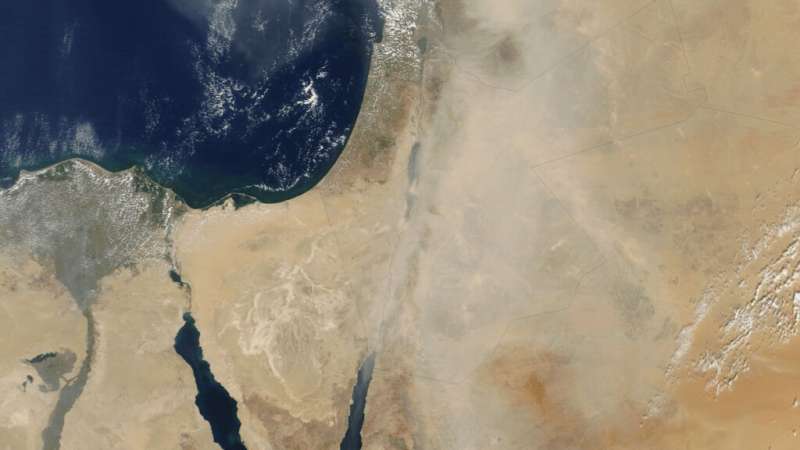
The attachedbacteria go along for the ride when the dust is lifted. When the dust settles again, airbornebacteria make up aerobiomes, which can change environmental chemistry and affect human and animal health.
In a study published in the Journal of Geophysical Research: Biogeosciences, Daniella Gat and colleagues collected airborne dust at different times. The dust's origins were revealed by trajectory modeling, whereas thebacterial community composition in the dust was identified using DNA Sequencing. Dust from different locations, including North Africa, Saudi Arabia, and Syria, can bring different types ofbacteria from hundreds to thousands of kilometers away.
The Aerobiomes collected in Israel were similar to the Aerobiomes collected in Saudi Arabia.
The communities on the ground were different from the ones in Israel. 34% of Israel's aerobiomebacteria probably came from Israeli soils, showing that soil can exchange a lot ofbacteria with aerobiomes. Plants and water from the Mediterranean and Red Sea contributed to the decrease in the number of aerobiomebacteria.
In order to understand how aerobiomes could affect environments and health, scientists need to know what genes they carry. On average, the dustbacteria contained more genes that biodegrade organic contaminants like benzoate and confer antibiotic resistance compared with thebacteria in other places.
The researchers say higher proportions of these genes suggest widespread fingerprints on the community.
Dust dispersal of antibiotic resistance genes could affect human and livestock health, but site-specific analyses are needed to test whether dust introduces new antibiotic resistance to a given location The antibiotic-resistantbacteria in dust might not be viable. The researchers want to see if they can find livingbacteria cells in the dust samples.
The Functional Genes Profile of Atmospheric Dust in the East Mediterranean suggests anthropogenic influence on Aerobiome Composition. The DOI is 10.1029/2022JG007.
The story was re-posted by the Americangeoscience Union. The original story can be read here.